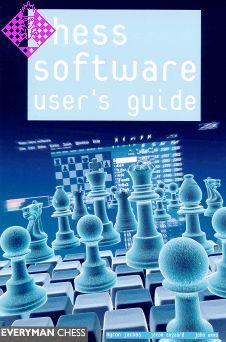Artikelnummer
LXJACCSUG
Chess Software - User's Guide
128 Seiten, kartoniert, Everyman
Final vergriffen
Interested in chess and computers? Then this groundbreaking book is perfect. Whether you are talking about the latest chess playing programs or chess database software, this book answers all of the questions you ever needed to ask. A team of experts, all experienced chess software users, review all the latest software available, highlighting the positives, the negatives and underlining what's value for money and what's not. The experts also provide fundamental answers to all those niggling little technical problems that always seem to arise with chess software. Whether you're looking for a way to defeat your chess computer, whether you wish to prepare thoroughly against an old adversary, or whether you just wish to make the most of your chess software, then this is the book for you.
If you have just picked up this book, the chances are that you are the proud owner of a piece of chess software. Whether this is the latest release of a sophisticated database package or a playing program that came free with a magazine, then this book will help you make the most of it.
Even basic chess software packages now usually have numerous interesting features and working out how to use these effectively is no easy task. Many players simply use a playing program to practice against and a database program just for storing and replaying games. Yet there is very much more that can be achieved with such packages and this book will show you how the experts do it.
Learn powerful techniques for organising and managing your chess data
Discover proven, effective methods to study the middlegame and endgame
Learn how to most effectively harness the power of a chess engine
Analyse efficiently your own strengths and weaknesses
In 1958, Bobby Fischer became a grandmaster at the age of 15. This was an unprecedented achievement at such a tender age and it was generally assumed that no other player would get remotely close to being able to emulate this feat. For many years, even in the 1970s and 1980s, it was quite common for the holder of the title 'world's youngest grandmaster' to be a highly mature 18 or even 19 year old.
However, in the last ten years, all this has changed. First of all the Hungarian Judit Polgar beat Fischer's record, which had stood for over 30 years, by a couple of months. After that, the floodgates opened: Peter Leko got there at 14, as did Etienne Bacrot, Ruslan Ponomariov and Teimour Radjabov. Then the Chinese player Bu Xiangzhi acquired the title at 13 years and ten months. But even these achievements were dwarfed by the Ukrainian Sergey Karjakin who registered his final grandmaster norm at the truly astonishing age of 12.
I do not think it is a coincidence that these amazing feats have all occurred simultaneously with the recent technological revolution. The last 10-15 years have radically changed the way that chess can now be played and studied. There are three main reasons for this:
1) Almost every remotely serious chessplayer must now be aware that software programs exist that can more or less hold their own even against world champions, as has been witnessed in several matches. Such advances have been made possible by the incredible increases in raw computing power that have occurred. The commercial software packages that are based around these programs are very useful for players of all strengths from complete beginner to the very best grandmasters. These packages can analyse your play and suggest where you are going wrong. They are also ideal sparring partners, happy to play any kind of position at any time, or to analyse any positions they are given and to present their conclusions. Access to such packages must inevitably speed up the process by which chess knowledge is gained.
2) The internet is a wonderful resource for the keen chessplayer. You can play other players online, receive coaching, download the latest games and watch games in major tournament as they happen. This change in access to information is quite astonishing. As recently as 1988, Jon Speelman sprung a new move on Nigel Short in a critical game in their World Championship Quarter-Final Match. In fact the move was not completely new, having been played a couple of weeks previously in a game in the Soviet Championship. The reason that Speelman new about the move and was able to prepare it was that the girlfriend of his second, Jon Tisdall, had noticed the game when it was published in a Norwegian newspaper. This was just 15 years ago but now, in this age of the internet, the fact that an important new move could only be discovered by a strong grandmaster 'en passant' seems rather quaint. Nowadays such a development would be witnessed in real time and would remain secret for approximately one nano-second.
3) Many software houses now produce highly sophisticated packages that can create and manage huge databases of chess information. Most serious players, and even a substantial number of casual enthusiasts, now have such packages. These make it much easier to study openings, middlegames and endgames than ever before.
As with technological developments in all areas of life such advances create their own problems. What is the best way to manage this tsunami of information without becoming completely bewildered and feeling swamped? How best to use chess-playing software? What is the best way to study middlegames and endgames? It is questions such as these that this book will attempt to answer.
The contributions in this book are from two battle-hardened professionals who have been playing, coaching and writing about chess for many years and are hugely experienced at using chess software. The first three chapters were written by the strong grandmaster John Emms, who has both played for and managed the English Olympic squad and is highly regarded as a chess author. Chapters four to six are the work of Danish International Master Jacob Aagaard. Jacob is a leading chess coach with very specific ideas about how chess should be studied and the role that software can play in that process. His book Excelling at Chess won the prestigious chesscafe.com Book of the Year Award.
The ideas in this book are mainly illustrated with screenshots that come from ChessBase (database package) and Fritz (playing program). Both of these packages are produced by ChessBase gmbh who are based in Hamburg and are generally regarded as the world leaders in chess software. However, there are many other packages available that will also perform the tasks illustrated here.
Byron Jacobs, Sussex, August 2003
If you have just picked up this book, the chances are that you are the proud owner of a piece of chess software. Whether this is the latest release of a sophisticated database package or a playing program that came free with a magazine, then this book will help you make the most of it.
Even basic chess software packages now usually have numerous interesting features and working out how to use these effectively is no easy task. Many players simply use a playing program to practice against and a database program just for storing and replaying games. Yet there is very much more that can be achieved with such packages and this book will show you how the experts do it.
Learn powerful techniques for organising and managing your chess data
Discover proven, effective methods to study the middlegame and endgame
Learn how to most effectively harness the power of a chess engine
Analyse efficiently your own strengths and weaknesses
In 1958, Bobby Fischer became a grandmaster at the age of 15. This was an unprecedented achievement at such a tender age and it was generally assumed that no other player would get remotely close to being able to emulate this feat. For many years, even in the 1970s and 1980s, it was quite common for the holder of the title 'world's youngest grandmaster' to be a highly mature 18 or even 19 year old.
However, in the last ten years, all this has changed. First of all the Hungarian Judit Polgar beat Fischer's record, which had stood for over 30 years, by a couple of months. After that, the floodgates opened: Peter Leko got there at 14, as did Etienne Bacrot, Ruslan Ponomariov and Teimour Radjabov. Then the Chinese player Bu Xiangzhi acquired the title at 13 years and ten months. But even these achievements were dwarfed by the Ukrainian Sergey Karjakin who registered his final grandmaster norm at the truly astonishing age of 12.
I do not think it is a coincidence that these amazing feats have all occurred simultaneously with the recent technological revolution. The last 10-15 years have radically changed the way that chess can now be played and studied. There are three main reasons for this:
1) Almost every remotely serious chessplayer must now be aware that software programs exist that can more or less hold their own even against world champions, as has been witnessed in several matches. Such advances have been made possible by the incredible increases in raw computing power that have occurred. The commercial software packages that are based around these programs are very useful for players of all strengths from complete beginner to the very best grandmasters. These packages can analyse your play and suggest where you are going wrong. They are also ideal sparring partners, happy to play any kind of position at any time, or to analyse any positions they are given and to present their conclusions. Access to such packages must inevitably speed up the process by which chess knowledge is gained.
2) The internet is a wonderful resource for the keen chessplayer. You can play other players online, receive coaching, download the latest games and watch games in major tournament as they happen. This change in access to information is quite astonishing. As recently as 1988, Jon Speelman sprung a new move on Nigel Short in a critical game in their World Championship Quarter-Final Match. In fact the move was not completely new, having been played a couple of weeks previously in a game in the Soviet Championship. The reason that Speelman new about the move and was able to prepare it was that the girlfriend of his second, Jon Tisdall, had noticed the game when it was published in a Norwegian newspaper. This was just 15 years ago but now, in this age of the internet, the fact that an important new move could only be discovered by a strong grandmaster 'en passant' seems rather quaint. Nowadays such a development would be witnessed in real time and would remain secret for approximately one nano-second.
3) Many software houses now produce highly sophisticated packages that can create and manage huge databases of chess information. Most serious players, and even a substantial number of casual enthusiasts, now have such packages. These make it much easier to study openings, middlegames and endgames than ever before.
As with technological developments in all areas of life such advances create their own problems. What is the best way to manage this tsunami of information without becoming completely bewildered and feeling swamped? How best to use chess-playing software? What is the best way to study middlegames and endgames? It is questions such as these that this book will attempt to answer.
The contributions in this book are from two battle-hardened professionals who have been playing, coaching and writing about chess for many years and are hugely experienced at using chess software. The first three chapters were written by the strong grandmaster John Emms, who has both played for and managed the English Olympic squad and is highly regarded as a chess author. Chapters four to six are the work of Danish International Master Jacob Aagaard. Jacob is a leading chess coach with very specific ideas about how chess should be studied and the role that software can play in that process. His book Excelling at Chess won the prestigious chesscafe.com Book of the Year Award.
The ideas in this book are mainly illustrated with screenshots that come from ChessBase (database package) and Fritz (playing program). Both of these packages are produced by ChessBase gmbh who are based in Hamburg and are generally regarded as the world leaders in chess software. However, there are many other packages available that will also perform the tasks illustrated here.
Byron Jacobs, Sussex, August 2003
| EAN | 9781857442847 |
|---|---|
| Gewicht | 220 g |
| Hersteller | Everyman |
| Breite | 15,6 cm |
| Höhe | 23,4 cm |
| Medium | Buch |
| Autor | Byron JacobsJohn EmmsJacob Aagaard |
| Sprache | Englisch |
| ISBN-10 | 1857442849 |
| ISBN-13 | 9781857442847 |
| Seiten | 128 |
| Einband | kartoniert |
| Name | Everyman (former Cadogan) |
|---|---|
| Adresse | 10 Northburgh Street London EC1V 0AT Großbritannien |
| dcaddelman@yahoo.com |
Verantwortlicher Importeuer:
| Name | Schachversand Niggemann |
|---|---|
| Adresse | Schadowstraße 5 48163 Münster Deutschland |
| info@schachversand.de | |
| Internet | www.schachversand.de |
004 Bibliography
005 Introduction
008 1 Managing Databases
027 2 Learning a New Opening
048 3 Learning about Yourself... and Your Opponents
062 4 Relating Openings to Middlegames and Endgames
106 5 General Training
123 6 Special Computer Products
005 Introduction
008 1 Managing Databases
027 2 Learning a New Opening
048 3 Learning about Yourself... and Your Opponents
062 4 Relating Openings to Middlegames and Endgames
106 5 General Training
123 6 Special Computer Products
vergleichende Rezension der Titel:
Jacobs/Aagaard/Emms: Chess Software User's Guide
Christian Kongsted: How to Use Computers to Improve Your Chess,
Praktisch zeitgleich haben die beiden Londoner Konkurrenzverlage Leitfäden zum Umgang mit Schachprogrammen herausgegeben. Der User's Guide fällt eindeutig unter die Kategorie „Überteuerter Schnellschuss". Die 128 groß bedruckten Seiten, einspaltig und gestreckt mit etlichen Screenshots, bewegen sich auf dem Niveau eines mittleren Benutzerhandbuches für ChessBase. Selbst das mag dem User das Geld wert sein, falls er mit der ChessBase-eigenen Hilfe nicht klar kommt. Doch zuvor sollte er auf die Internetseite www.schachvereine.de/scleinzell/ schauen, wo es mindestens ebenso viele und gute Tipps gratis gibt. Kritische Gedanken zum Thema oder etwa den Vergleich verschiedener Produkte gibt es nur ansatzweise und alibihaft.
Wesentlich anspruchsvoller ist Kongsteds Buch. Der Autor ist u. a. ein starker Fernschachspieler (FS-Elo 2510) und gibt einen differenzierteren Einblick in die Materie. Themen sind die Geschichte des Computerschachs, Grundlegendes zum Programmieren und zum „Denken" von Computern, „Blinde Flecken" (ein humorvolles Kapitel, das zeigt, wie auch heutige Spitzenprogramme völlig danebenliegen können), Anti-Computer-Strategien und Tipps zum Training mit Computern. Dann Gedanken zu verschiedenen Produkten (neben ChessBase und ChessAssistant werden auch nützliche Tools wie Bookilp erwähnt) und die Charakterisierung der Spitzenprogramme. Vor allem für Fernschachspieler dürften Hinweise wie „Hiarcs ist das stärkste Programm zum Analysieren von Turmendspielen" nützlich sein. Das Buch schließt mit kurzen Hinweisen zum Internetschach bzw. ICC sowie einem ausführlichen Internet-Adressbuch mit Links zu Seiten für Schachcomputerfreaks.
Insgesamt wendet sich das Buch an den schon recht erfahrenen Anwender. Grundlegende Arbeitstechniken werden, im Unterschied zum User's Guide, bereits vorausgesetzt, und es gibt keinerlei Abbildungen. Durchaus noch steigerungsfähig, aber insgesamt empfehlenswert.
Harald Keilhack, Schach 01/2004
IM Byron Jacobs, Schachtrainer Jacob Aagaard und GM John Emms haben solo bereits mehrere, z.T. sehr erfolgreiche und preisgekrönte Schachbücher veröffentlicht. Mit dem neu erschienenen »Chess Software User's Guide« legen sie erstmals ein Gemeinschaftswerk vor. Das vorliegende Buch geht nahezu ausschließlich darauf ein, mithilfe moDatenbank- und SchachspielSchachdaten möglichst efzu sammeln und zu verwalten, um damit letztlich auch eine Steigeder eigenen Spielstärke anzubahGeschichtliche Aspekte des Comreines Spielen gegen Computer, breit gestreuter Überblick über alle Programme am Markt oder Spielen im Internet wie es das kürzlich in ROCHADE EUROPA vorge»How to Use Computers to Improve Your Chess« (RE 11/03, S. 90) anstrebt, werden nicht berührt. Beide Bücher würden sich im Bücherschrank deshalb gut ergänzen. Die Autoren erläutern u.a.: Managing Databases (effektives Analysieren eiPartien mit einem SchachproEröffnungsschlüssel anlegen, Positionssuche, Partiedownload, Ummit verschiedenen Datenbanken zum gleichen Thema), Learning a New Opening (Datenbank zur gewählten Eröffnung erstellen, Dublettensuche, Eröffnungsbücher, Eröffnungsreport, Repertoiredatenbank), Learning about Yourself... and Your Opponents (statisAuswertung vorliegender Pargezielte Suche nach Partien des Gegners), Relating Openings to Middlegames and Endgames (DiffeRückwärtsanalyse von Parhinsichtlich bestimmter EröffnunAnalyse typischer Mittelspielstel
Zur Erklärung der Programmfunktioziehen die Verfasser als Beispiele in erster Linie Fritz 7 und ChessBase 8 heran. Es dürfte aber nicht schwer fallen dies auch auf andere Programme zu übertragen, denn wer sich für das vorliegende Buch interessiert, verfügt, wie die Autoren selbst vermuten, wohl bereits über einige allgemeine Erfahim Umgang mit Schachsoftware. Die Verfasser gehen jeweils detailliert vor. Die ausführlichen Erläuterungen und die zahlreichen Abbildungen (v.a. »Screenshots« von den Programmächen) machen es Lesern leicht, den Beschreibungen und Erklärungen zu folgen. Wer das Buch intensiv durcharbeitet, wird sicherlich den geünschten Effekt, nämlich schachliche Daten effektiver und übersichtlicher zu verwalten, erzielen. Es gefällt, dass die Autoren keineswegs eine Hörigkeit geüber den Programmen propagieren. (»It is better to analyse a game extensively by yourself, than to analyse 100 games with Fritz. Learn to think for yourself.« S. 108)
Wer allerdings zu den wohl wenigen Prozent der Softwarenutzer gehört, die ihr Programm aus jahrelanger intensiErfahrung bereits aus dem Effeff kennen, der wird eher wenig Neues finden. Anders ist es hingegen beim Kapitel General Training. Hier finden sich eine Reihe von originellen und inVorschlägen, besonders zum Thema Endspieltraining, die ich z.T. noch nirgendwo sonst gelesen habe (z.B.: Kombination Endspielbuch / Computertraining, systematisch komStellungen trainieren sowie Stugegen Computer ausspielen). Das letzte Kapitel, Special Computer Progeht schließlich auf weitere schachbezogene Software kurz ein (Taktik-, Strategie-, Eröffnungs-CDs). Hier würde man sich noch mehr Diffeund auch Hinweise auf Hersteller wünschen. Alles in allem erweisen sich die Autoals sehr sachkundig und bereiten ihren Stoff durchgängig anschaulich und systematisch auf. Anwender, die wenig bis durchschnittliche Erfahrunmit Schach- oder Datenbankprohaben, werden vom vorlieBuch sicher großen Gewinn haben!
Helmut Conrady, Rochade Europa 03/2004
Jacobs/Aagaard/Emms: Chess Software User's Guide
Christian Kongsted: How to Use Computers to Improve Your Chess,
Praktisch zeitgleich haben die beiden Londoner Konkurrenzverlage Leitfäden zum Umgang mit Schachprogrammen herausgegeben. Der User's Guide fällt eindeutig unter die Kategorie „Überteuerter Schnellschuss". Die 128 groß bedruckten Seiten, einspaltig und gestreckt mit etlichen Screenshots, bewegen sich auf dem Niveau eines mittleren Benutzerhandbuches für ChessBase. Selbst das mag dem User das Geld wert sein, falls er mit der ChessBase-eigenen Hilfe nicht klar kommt. Doch zuvor sollte er auf die Internetseite www.schachvereine.de/scleinzell/ schauen, wo es mindestens ebenso viele und gute Tipps gratis gibt. Kritische Gedanken zum Thema oder etwa den Vergleich verschiedener Produkte gibt es nur ansatzweise und alibihaft.
Wesentlich anspruchsvoller ist Kongsteds Buch. Der Autor ist u. a. ein starker Fernschachspieler (FS-Elo 2510) und gibt einen differenzierteren Einblick in die Materie. Themen sind die Geschichte des Computerschachs, Grundlegendes zum Programmieren und zum „Denken" von Computern, „Blinde Flecken" (ein humorvolles Kapitel, das zeigt, wie auch heutige Spitzenprogramme völlig danebenliegen können), Anti-Computer-Strategien und Tipps zum Training mit Computern. Dann Gedanken zu verschiedenen Produkten (neben ChessBase und ChessAssistant werden auch nützliche Tools wie Bookilp erwähnt) und die Charakterisierung der Spitzenprogramme. Vor allem für Fernschachspieler dürften Hinweise wie „Hiarcs ist das stärkste Programm zum Analysieren von Turmendspielen" nützlich sein. Das Buch schließt mit kurzen Hinweisen zum Internetschach bzw. ICC sowie einem ausführlichen Internet-Adressbuch mit Links zu Seiten für Schachcomputerfreaks.
Insgesamt wendet sich das Buch an den schon recht erfahrenen Anwender. Grundlegende Arbeitstechniken werden, im Unterschied zum User's Guide, bereits vorausgesetzt, und es gibt keinerlei Abbildungen. Durchaus noch steigerungsfähig, aber insgesamt empfehlenswert.
Harald Keilhack, Schach 01/2004
IM Byron Jacobs, Schachtrainer Jacob Aagaard und GM John Emms haben solo bereits mehrere, z.T. sehr erfolgreiche und preisgekrönte Schachbücher veröffentlicht. Mit dem neu erschienenen »Chess Software User's Guide« legen sie erstmals ein Gemeinschaftswerk vor. Das vorliegende Buch geht nahezu ausschließlich darauf ein, mithilfe moDatenbank- und SchachspielSchachdaten möglichst efzu sammeln und zu verwalten, um damit letztlich auch eine Steigeder eigenen Spielstärke anzubahGeschichtliche Aspekte des Comreines Spielen gegen Computer, breit gestreuter Überblick über alle Programme am Markt oder Spielen im Internet wie es das kürzlich in ROCHADE EUROPA vorge»How to Use Computers to Improve Your Chess« (RE 11/03, S. 90) anstrebt, werden nicht berührt. Beide Bücher würden sich im Bücherschrank deshalb gut ergänzen. Die Autoren erläutern u.a.: Managing Databases (effektives Analysieren eiPartien mit einem SchachproEröffnungsschlüssel anlegen, Positionssuche, Partiedownload, Ummit verschiedenen Datenbanken zum gleichen Thema), Learning a New Opening (Datenbank zur gewählten Eröffnung erstellen, Dublettensuche, Eröffnungsbücher, Eröffnungsreport, Repertoiredatenbank), Learning about Yourself... and Your Opponents (statisAuswertung vorliegender Pargezielte Suche nach Partien des Gegners), Relating Openings to Middlegames and Endgames (DiffeRückwärtsanalyse von Parhinsichtlich bestimmter EröffnunAnalyse typischer Mittelspielstel
Zur Erklärung der Programmfunktioziehen die Verfasser als Beispiele in erster Linie Fritz 7 und ChessBase 8 heran. Es dürfte aber nicht schwer fallen dies auch auf andere Programme zu übertragen, denn wer sich für das vorliegende Buch interessiert, verfügt, wie die Autoren selbst vermuten, wohl bereits über einige allgemeine Erfahim Umgang mit Schachsoftware. Die Verfasser gehen jeweils detailliert vor. Die ausführlichen Erläuterungen und die zahlreichen Abbildungen (v.a. »Screenshots« von den Programmächen) machen es Lesern leicht, den Beschreibungen und Erklärungen zu folgen. Wer das Buch intensiv durcharbeitet, wird sicherlich den geünschten Effekt, nämlich schachliche Daten effektiver und übersichtlicher zu verwalten, erzielen. Es gefällt, dass die Autoren keineswegs eine Hörigkeit geüber den Programmen propagieren. (»It is better to analyse a game extensively by yourself, than to analyse 100 games with Fritz. Learn to think for yourself.« S. 108)
Wer allerdings zu den wohl wenigen Prozent der Softwarenutzer gehört, die ihr Programm aus jahrelanger intensiErfahrung bereits aus dem Effeff kennen, der wird eher wenig Neues finden. Anders ist es hingegen beim Kapitel General Training. Hier finden sich eine Reihe von originellen und inVorschlägen, besonders zum Thema Endspieltraining, die ich z.T. noch nirgendwo sonst gelesen habe (z.B.: Kombination Endspielbuch / Computertraining, systematisch komStellungen trainieren sowie Stugegen Computer ausspielen). Das letzte Kapitel, Special Computer Progeht schließlich auf weitere schachbezogene Software kurz ein (Taktik-, Strategie-, Eröffnungs-CDs). Hier würde man sich noch mehr Diffeund auch Hinweise auf Hersteller wünschen. Alles in allem erweisen sich die Autoals sehr sachkundig und bereiten ihren Stoff durchgängig anschaulich und systematisch auf. Anwender, die wenig bis durchschnittliche Erfahrunmit Schach- oder Datenbankprohaben, werden vom vorlieBuch sicher großen Gewinn haben!
Helmut Conrady, Rochade Europa 03/2004
Mehr von Everyman
-
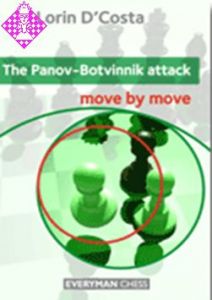 The Panov-Botvinnik attack21,95 €
The Panov-Botvinnik attack21,95 € -
 The Nimzo-Indian24,95 €
The Nimzo-Indian24,95 € -
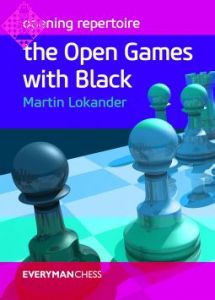 The Open Games with Black24,95 €
The Open Games with Black24,95 € -
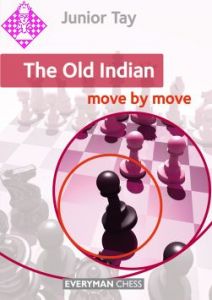 The Old Indian: Move by Move24,95 €
The Old Indian: Move by Move24,95 € -
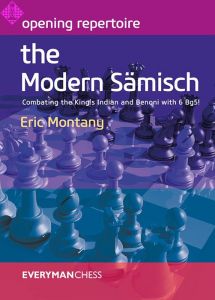 The Modern Sämisch24,95 €
The Modern Sämisch24,95 € -
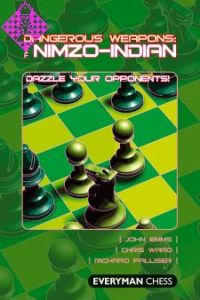 The Nimzo-Indian21,95 €
The Nimzo-Indian21,95 € -
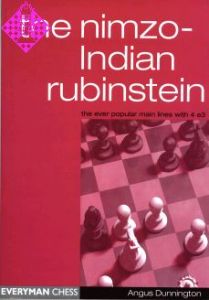 The Nimzo-Indian Rubinstein17,95 €
The Nimzo-Indian Rubinstein17,95 € - Mehr von Everyman

